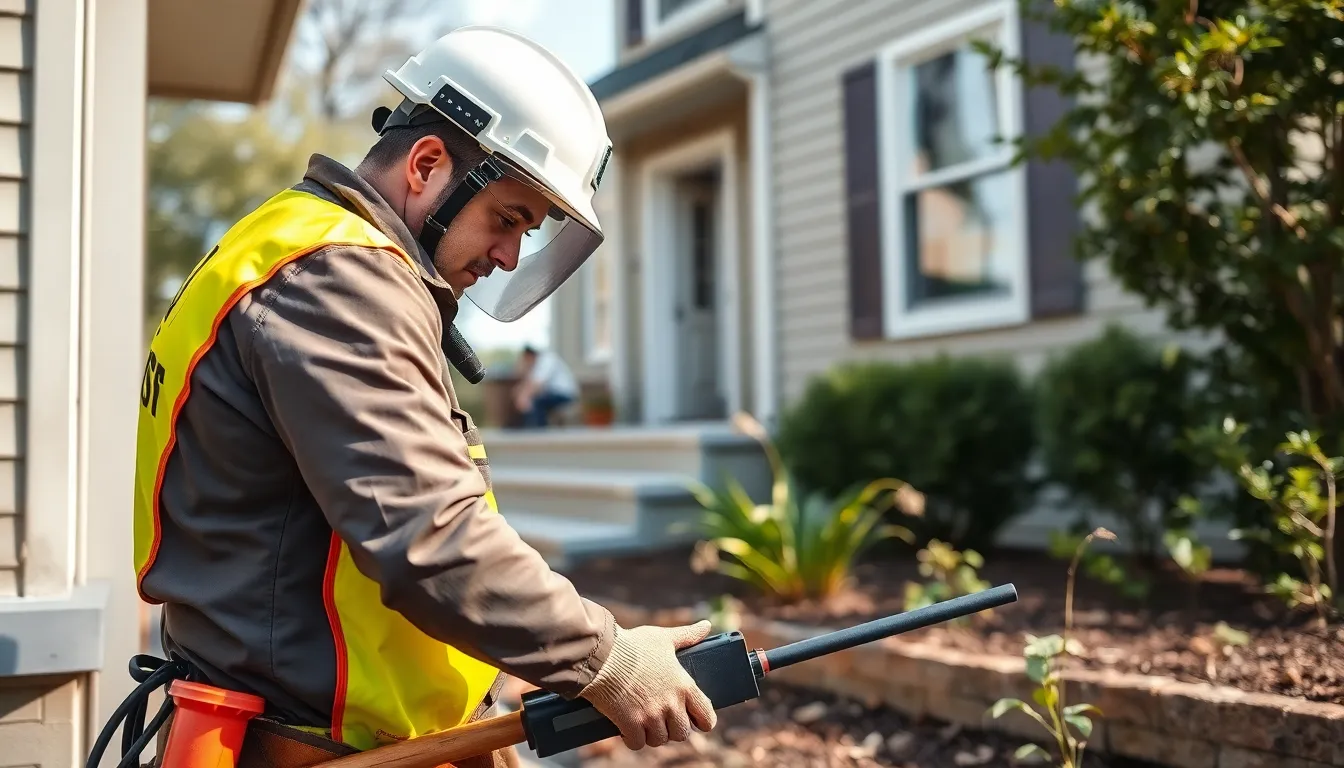When those uninvited guests—like cockroaches, ants, or the occasional raccoon—decide to crash the party, it’s time to call in the pest control cavalry. But before you dial that number, you might wonder how much this little rescue mission will set you back. Spoiler alert: it’s not as scary as a spider in your shoe!
Table of Contents
ToggleOverview of Pest Control Costs
Pest control costs vary significantly based on several factors. Generally, the type of pest occupies a crucial role in determining the price. For instance, exterminating termites may range from $300 to $1,000, while general pest control for insects like ants or roaches typically costs between $100 and $300 per treatment.
Frequency of treatment also affects pricing. Some homeowners opt for a one-time service, while others prefer monthly, bi-monthly, or quarterly plans to maintain long-term prevention. Monthly plans may cost around $40 to $70, whereas quarterly services can vary from $100 to $300.
Size and location of the property factor into the costs too. Larger homes usually incur higher fees due to the increased treatment area. Additionally, properties in urban areas might experience higher prices compared to those in rural settings, as demand for pest control services can fluctuate.
Specialized treatments may impact the overall cost. Bed bug extermination can reach $1,000 or more due to the intensive methods required. In contrast, wildlife removal, such as raccoons or squirrels, often costs anywhere from $200 to $500, depending on the complexity of the situation.
Understanding these variables helps homeowners budget appropriately for pest control. Routine inspections, preventative measures, and acknowledging potential infestations can reduce resulting costs in the long run. Investing in a pest management plan not only addresses current issues, but it also promotes a pest-free environment.
Factors Affecting Pest Control Pricing

Various aspects directly influence the pricing of pest control services. Understanding these factors helps homeowners make informed decisions.
Type of Pest
Different pests trigger varying costs for control. For example, general pests like ants and roaches typically incur lower fees, while termites necessitate specialized and more expensive treatments. Bed bugs often require intensive eradication methods, leading to higher bills, sometimes exceeding $1,000. Wildlife removal services further differ in cost based on the specific animal, with raccoons and squirrels varying significantly in pricing.
Infestation Severity
The extent of the infestation heavily impacts the final cost. Minor infestations tend to require less time and fewer resources, while severe cases usually involve multiple visits and comprehensive strategies. For example, an initial inspection followed by ongoing treatments may drive up costs for homeowners dealing with extensive pest problems. Prominent infestations can result in more aggressive measures, translating to higher expenses.
Treatment Method
The chosen treatment method also dictates the overall price. Standard treatments may involve chemical sprays and traps, which often fall within a more affordable price range. In contrast, eco-friendly or integrated pest management techniques often require additional investment due to their specialized nature. Homeowners can choose between one-time treatments and ongoing plans, often resulting in lower overall costs by committing to a monthly service, which typically ranges from $40 to $70.
Average Pricing for Pest Control
Pest control costs vary significantly based on several factors. Understanding these differences helps homeowners and business owners make informed decisions.
Residential vs. Commercial Costs
Residential pest control typically costs between $100 and $300 per treatment. Commercial services, however, often incur higher expenses due to larger property sizes and stricter regulations. Businesses may spend $150 to $500 per visit, depending on the type of pests and treatment needs. Additionally, the frequency of services often increases commercial rates, as ongoing treatment programs are more common for businesses to maintain a pest-free environment.
One-Time Treatments vs. Ongoing Service
One-time treatments provide immediate relief from pest issues. Costs range from $100 to $1,000, based on the pest type and infestation severity. Ongoing services, on the other hand, offer long-term protection. Monthly plans generally fall within the $40 to $70 range. Homeowners may prefer these plans for continued pest prevention and routine inspections.
Additional Costs to Consider
Pest control expenses often extend beyond the basic services. Homeowners should consider additional costs that may arise during the pest control process.
Inspection Fees
Inspection fees can vary significantly based on the company’s policies. Many pest control companies charge between $50 and $150 for initial assessments. Some businesses offer free inspections, particularly when clients engage their services afterward. Inspections help identify the type of pests, infestation severity, and necessary treatment methods. By investing in an inspection, property owners may save money in the long run through targeted treatments.
Follow-Up Treatments
Follow-up treatments may be essential for ensuring complete pest elimination. Standard follow-up visits usually range from $50 to $200, depending on the pest type and infestation level. Homeowners may need these treatments available in cases of persistent infestations or when certain pests require multiple applications. Regular follow-ups help secure a pest-free environment, preventing future outbreaks and thus, safeguarding the initial investment in pest control services.
Preventative Measures
Preventative measures are crucial for maintaining a pest-free property. Strategies include sealing entry points, landscaping adjustments, and routine inspections. These tactics often come with additional costs, typically ranging from $100 to $500 depending on the property’s size and required measures. While they represent an upfront expense, preventative measures can significantly lower the likelihood of future infestations. Investing in prevention often proves more economical than dealing with severe pest issues later.
Understanding pest control costs is essential for homeowners and business owners alike. By recognizing the various factors that influence pricing such as the type of pest and the severity of the infestation, individuals can make informed decisions. Whether opting for one-time services or ongoing plans, the investment in pest control can lead to a healthier and more comfortable environment.
Preventative measures may require an upfront cost but often save money in the long run by minimizing the risk of future infestations. With a range of options available, it’s clear that effective pest management can be both accessible and affordable.




